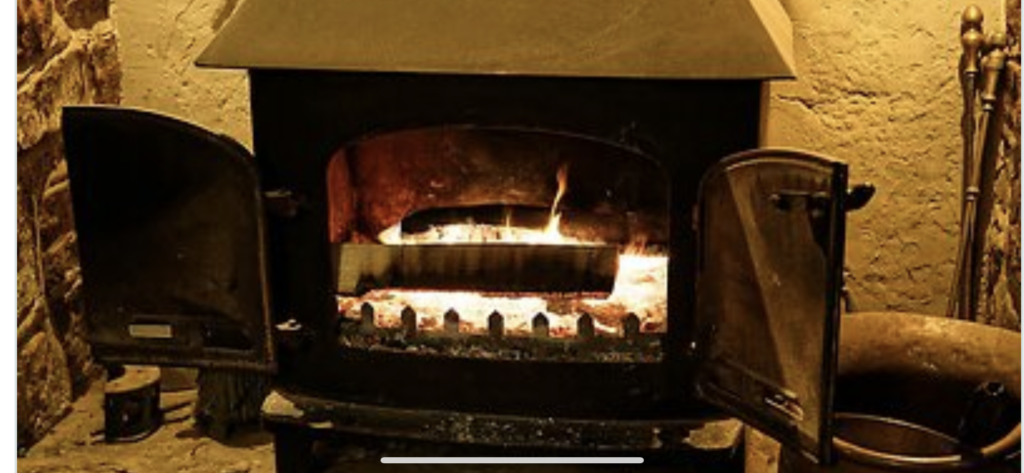Urban wood burning soars, with 18,000 complaints but only 3 fines

New research from Mums for Lungs, a campaign group on air pollution, shows the failure to tackle wood smoke pollution. Despite 18,693 complaints from members of the public (2015-2021), only seven councils have issued fines in the last six years, on average just over three every year. Most of the areas with the highest level of complaints are urban areas like London, Oldham or Preston.
Having a wood stove in your home is like having 750 diesel trucks pumping their exhaust into your living room (1), yet 200,000 stoves are sold every year in the UK. Wood burning stoves are estimated to cause over a third (38%) of PM2.5 – a deadly form of air pollution linked to lung cancer, strokes, heart attacks and dementia. (2)
The number of complaints has increased from under 3,000 (2,976) a year to over 5,000 (5,568) a year between 2019 and 2020 – an increase of 87%.
Jemima Hartshorn, founder of Mums for Lungs, said:
“It’s like a wolf in sheep’s clothing. Even so called ‘eco- stoves’ emit much more pollution than diesel HGVs – and you would not want those in your living room! We urge the Government to end wood burning, and those who has a woodburner or a fireplace, to think twice. Cold weather makes respiratory diseases worse.”
About 200,000 new wood burning stoves are bought every year. Campaigners have written to the Health Secretary to call for wood stoves to be phased out by 2027.
Hazel Agombar, Winchester “It’s dreadful. When our neighbours light their log burners our home is enveloped in toxic smoke. We can’t shut the door on it – the particulate pollution invades the house. I am powerless to stop it. I cannot prevent my family from breathing dirty air. The log burners are secondary sources of heating and entirely unnecessary. I feel total despair at times.”
Emma, who lives in West Yorkshire, said: “I had never smelt woodsmoke regularly where I live till September 2020. Then, almost overnight, every day the smell of woodsmoke was in the air. As the days went on, more and more people lit their woodburners. Looking out of my back window was like going back in time seeing so many smoking chimneys and wood burner flues. From then on, breathing fresh air has become a rarity.
“I am unable to hang clothes on the line, open windows when I want or need to, or spend time in the garden. During the colder months, if I walk outside my chest feels tight and I start coughing. I find this incredibly hard. Being outside or feeling the air on my face is how I keep sane, and not being able to do this makes life more difficult as my stress coping strategy is removed.”
Susannah (not her real name) who lives in Warrington, said: “Over the last few years I’ve noticed the smell from wood burning stoves in my area, which has gradually increased to a point where I can no longer walk locally for most of the year. The problem significantly worsened when a close neighbour installed a Defra approved wood stove, almost 2 years ago. Within weeks of my neighbour installing their wood stove, my lungs were affected so badly that my GP had to refer me to a respiratory specialist. I can’t live like this and I intend to sell my home and move to a new area.
“I’ve contacted my local council about the issue many times and they said they’re aware of the large increase in the number of wood burning stoves in the town over the last few years, and that there have been a number of complaints about them, but the council seem reluctant to do anything about it. I’ve also contacted my MP who has shown no interest in the issue at all.
“Smoking was banned in indoor public places because it’s unacceptable to expose people to second hand smoke and yet many people are exposed to large amounts of smoke and invisible pollution from neighbour’s wood burning stoves. Wood burning stoves should be banned.”
Graham Turnbull, who lives in Sheffield, said: “I live in Sheffield where the air pollution level is around the World Health Organisation limit. Garden and allotment fires are the worst but I have also noticed that when people in my neighbourhood use their wood burners the ultra fine dust in the air can be 12 – 15 times what the WHO would consider safe on an annual basis.
“Our house is Victorian and draughty by design. I monitor air quality inside and outside my house and I can see the levels creep up indoors as the air pollution gets into my house even with the doors and windows shut. We have had to install two expensive air purifiers that run 24/7.
“I have asthma and my daughter has a history of asthma. Every day I read about a new area of human health impacted by ultra fine dust (PM2.5) air pollution. I want to provide a healthy environment for my children to grow up in. I want to be able to leave my house and not worry about what I am breathing in.”




